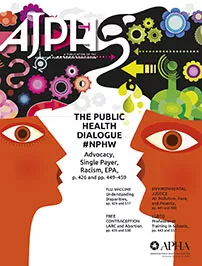After implementing a cross-sector collaboration between medical providers, nonmedical service providers, and a wide range of other stakeholders in the community, the town of Little Falls, Minnesota, saw a reduction in opioid use and abuse among patients at the local hospital and clinic and within the broader local rural community.
In a new American Journal of Public Health article, SHADAC researchers describe the collaborative effort in Little Falls and examine results from the project.[1]
Key Components of the Intervention
The Little Falls initiative, which launched in 2014, involves two key components:
- An interdisciplinary Controlled Substance Care Team (Care Team) was established at the local hospital and clinic. The team, which consists of a social worker, a nurse, two physicians, and a pharmacist, works in consultation with any patient using a controlled substance (i.e., opioid analgesic, benzodiazepine, or stimulant) to establish a Controlled Substance Care Plan. Using this plan, the Care Team aims helps each patient to (a) taper or maintain their dosage or (b) discontinue narcotics prescriptions entirely. Importantly, the Care Team also works to address social determinants of health (e.g., housing, transportation, food access, employment) that might contribute to the overuse of controlled substances.
- The community formed a multidisciplinary task force that includes stakeholders from a range of sectors—e.g., medical, county public health and social services, law enforcement, education, etc.—in Little Falls and the surrounding area. The task force works to raise community awareness about the prevention of opioid use and abuse and facilitates community-wide collaboration on preventing and treatment prescription drug abuse. Of note, the local hospital and clinic have worked with corrections and law enforcement through their mutual task force collaboration to (a) make medication-assisted treatment available to individuals with opioid use disorder at the county jail and (b) address and reduce the diversion of prescription narcotics by hospital and clinic patients without pressing criminal charges.
Results of the Intervention
A number of results point to the success of the Little Falls initiative:
- After six months of Care Team implementation, therapeutic drug monitoring[2] went from being the top emergency department visit type at the local hospital to being absent from the top 20 visit types.
- Of the more than 1,500 clinic patients who were using controlled substances at the local hospital and clinic, 453 had been tapered off as of March 2018.
- Between January 2015 and March 2018, the local pharmacy saw a reduction of 44,952 narcotics doses prescribed each month.
- Task force law enforcement partners report that drug crimes from narcotics sales have decreased because of factors including fewer extra pills being available for diversion.
- Among 36 individuals who received MAT between May 2016 and March 2018 while incarcerated, all saw a subsequent reduction in average days incarcerated.
Learn More
Access the full article, “Addressing the Rural Opioid Addiction and Overdose Crisis through Cross Sector Collaboration: Little Falls, MN,” to learn more about the innovative collaboration efforts within the Little Falls community.
Related Reading
Minnesota’s Accountable Communities for Health: Context and Core Components
Evaluation of the Minnesota Accountable Health Model: Final Report
[1] Au-Yeung, C., Blewett, L.A., & Lange, K. (2019). “Addressing the Rural Opioid Addiction and Overdose Crisis Through Cross-Sector Collaboration: Little Falls, MN.” American Journal of Public Health, 109(2):260-262. doi: 10.2105/AJPH.2018.304789
[2] An International Classification of Diseases, Ninth Revision, code applied to many visits during which patients sought narcotics for uncontrolled pain

